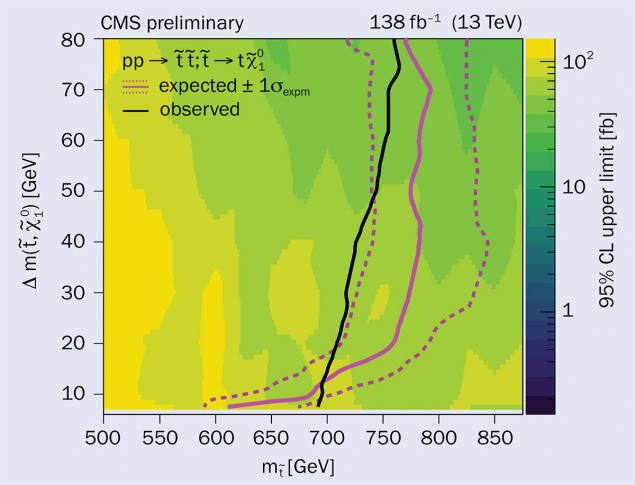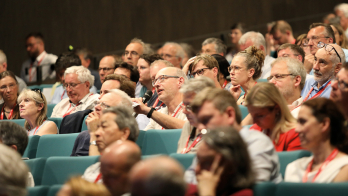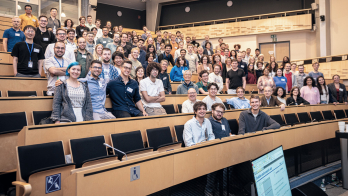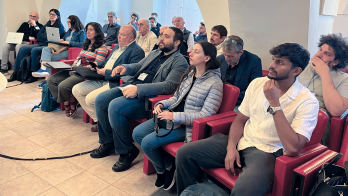A report from the CMS experiment.

Since the LHC began operations in 2008, the CMS experiment has been searching for signs of supersymmetry (SUSY) – the only remaining spacetime symmetry not yet observed to have consequences for physics. It has explored higher and higher masses of supersymmetric particles (sparticles) with increasing collision energies and growing datasets. No evidence has been observed so far. A new CMS analysis using data recorded between 2016 and 2018 continues this search in an often overlooked, difficult corner of SUSY manifestations: compressed sparticle mass spectra.
The masses of SUSY sparticles have very important implications for both the physics of our universe and how they could be potentially produced and observed at experiments like CMS. The heavier the sparticle, the rarer its appearance. On the other hand, when heavy sparticles decay, their mass is converted to the masses and momenta of SM particles, like leptons and jets. These particles are detected by CMS, with large masses leaving potentially spectacular (and conspicuous) signatures. Each heavy sparticle is expected to continue to decay to lighter ones, ending with the lightest SUSY particles (LSPs). LSPs, though massive, are stable and do not decay in the detector. Instead, they appear as missing momentum. In cases of compressed sparticle mass spectra, the mass difference between the initially produced sparticles and LSPs is small. This means the low rates of production of massive sparticles are not accompanied by high-momentum decay products in the detector. Most of their mass ends up escaping in the form of invisible particles, significantly complicating observation.
This new CMS result turns this difficulty on its head, using a kinematic observable RISR, which is directly sensitive to the mass of LSPs as opposed to the mass difference between parent sparticles and LSPs. The result is even better discrimination between SUSY and SM backgrounds when sparticle spectra are more compressed.
This approach focuses on events where putative SUSY candidates receive a significant “kick” from initial-state radiation (ISR) – additional jets recoiling opposite the system of sparticles. When the sparticle masses are highly compressed, the invisible, massive LSPs receive most of the ISR momentum-kick, with this fraction telling us about the LSP masses through the RISR observable.
Given the generic applicability of the approach, the analysis is able to systematically probe a large class of possible scenarios. This includes events with various numbers of leptons (0, 1, 2 or 3) and jets (including those from heavy-flavour quarks), with a focus on objects with low momentum. These multiplicities, along with RISR and other selected discriminating variables, are used to categorise recorded events and a comprehensive fit is performed to all these regions. Compressed SUSY signals would appear at larger values of RISR, while bins at lower values are used to model and constrain SM backgrounds. With more than 2000 different bins in RISR, over several hundred object-based categories, a significant fraction of the experimental phase space in which compressed SUSY could hide is scrutinised.
In the absence of significant observed deviations in data yields from SM expectations, a large collection of SUSY scenarios can be excluded at high confidence level (CL), including those with the production of stop quarks, EWKinos and sleptons. As can be seen in the results for stop quarks (figure 1), the analysis is able to achieve excellent sensitivity to compressed SUSY. Here, as for many of the SUSY scenarios considered, the analysis provides the world’s most stringent constraints on compressed SUSY, further narrowing the space it could be hiding.
Further reading
CMS Collab. 2024 CMS-PAS-SUS-23-003.







